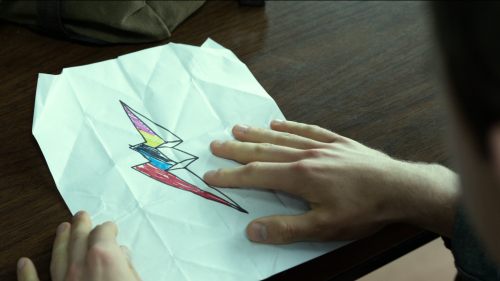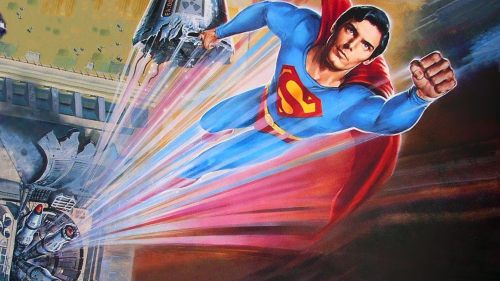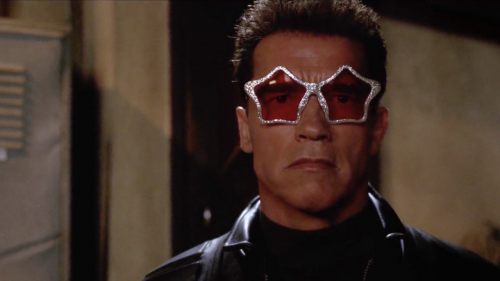Say Something Nice: CONGO
After the success of Steven Spielberg's 1993 blockbuster, Jurassic Park, several studios wanted to cash in on similar storylines, and author Michael Crichton seemed to be the key factor. The founding father of the techno-thriller genre, Crichton’s novels served as cinematic blueprints for what moviegoers wanted to watch on screen in the mid-‘90s. Stories of corrupt corporations utilizing technological advancements for nefarious purposes and questioning the morality of man while exploring a connection with animals became alluring. Director Frank Marshall worked with Spielberg in the past as an executive producer on Raiders of the Lost Ark and Indiana Jones and the Temple of Doom. Marshall also directed the spider-infested horror-comedy Arachnophobia. As a result, he utilized his professional connections and affinity for jungle decor and animals that freak people out to direct the film adaptation of Crichton’s thriller, Congo.
The premise of the film revolves around multiple characters’ objectives to enter the lush depths of the Congo jungle. A crooked communications company called TraviCom is in search of a rare diamond in order to take technological communications to the next level. While its first mission crew was killed off by an unknown predator (despite being led by the badass Bruce Campbell), they send the calculated yet morally centered Dr. Karen Ross (Laura Linney) to complete the expedition. Along the way, she encounters Dr. Peter Elliot (Dylan Walsh), a kind-hearted primatologist who is traveling with a gorilla named Amy. Peter has spent several years of research teaching Amy sign language, and is now en route to return her to her homeland. They also cross paths with Romanian philanthropist Herkermer Homolka, played by the glorious Tim Curry who only three years prior terrorized audiences with his performance as Pennywise. Homolka is in search of the lost city of Zinj and he believes Amy knows the location based off one of her paintings that is reminiscent of the city’s ruins. They eventually stumble upon a unique species of grey killer gorillas who have evolved to the landscape of the surrounding volcano and guard the mine that holds the crystals Ross and Homolka desire.
Congo is one of those films you may have fond memories of as a kid in the ‘90s, but revisiting the nostalgia is not nearly as exciting as you remember. Crichton’s novel is a thriller, one that utilizes technology and a theme of communication as both a weapon and a way to enhance understanding between man and animal. The film adaptation abandons this notion, despite numerous killer apes and a few gory scenes with dead bodies littered across the jungle floor. The characters are one-dimensional and are each equipped with witless one-liners and awkward sexual situations to tease the audience with some sort of romance that may bud from such a stressful journey. The set itself looks as if it is straight off the backlot, with viewers driving through on a tour eyeing all the fake plants and rocks that mimic an obviously fabricated jungle. I mean, Amy the gorilla requests a “green drop drink” (aka a martini) while she is in mid-flight to Africa. It gets pretty ridiculous to say the least. With a 23% score on Rotten Tomatoes and void of all the potential of suspense and exhilarating action that could be produced from such a plot, Congo falls short on its cinematic impact.
However, the heart of this film belongs to Amy the gorilla. While the special effects makeup is pretty fantastic for the times thanks to the talented work of Stan Winston, the astonishing aspect of Amy’s abilities is that they aren’t entirely fictional. Crichton was inspired to write Congo after learning about the Western lowland gorilla Koko, who was born in the San Francisco Zoo and was taught variations of American Sign Language by animal psychologist Francine “Penny” Patterson. Koko was able to understand more than 1,000 signs of what Patterson categorized as GSL or “Gorilla Sign Language”. In conjunction with signing, Koko reportedly understood 2,000 words of spoken English and exhibited a tremendous amount of empathy and affection towards humans and animals alike. She was presented stuffed animals to care for and enhance her nurturing, mother-like tendencies. On her birthday in 1984, she was allowed to adopt a kitten from an abandoned litter. Koko attempted to nurse the young kitten, gave him kisses, and regularly cuddled it as if it were her own baby. When “All Ball” escaped one day and was killed by a car, Koko signed "Bad, sad, bad" and "Frown, cry, frown, sad". The skills Koko learned taking care of stuffed animals enabled her to grow and not only nurture a living animal as her own, but also to empathize and understand death while grieving the way a human would.
In the film, Amy the gorilla also has a stuffed animal that she takes care of, and she prides herself in being a good mother. She wears a device on her arm that vocalizes her signaling. The primary themes of the movie revolve around various aspects of communication and empathy across species. Amy expresses herself by painting pictures, signing, taking care of her “baby”, and playing with her teacher. She attempts to connect with a family of silverback gorillas, but she quickly notices she is different from them as they do not communicate the way she does. Her desperate need to be a mother and be able to communicate with those similar to her is strongly exhibited in one scene where she rescues Peter from the murderous troop of gorillas. Sure, there are laser guns randomly involved that help a little bit too, but ultimately the themes of communication and nurturing empathy for both your own species and others are the core morals that the film leaves audiences with once the credits roll.
The ability to communicate with another species isn’t a new concept. It’s been explored in various ways on screen spanning from Lassie and Doctor Dolittle, to Phenomena, and most recently, Arrival (if you want to include aliens). All emphasize this inherent need to connect and communicate, but one of the key pieces needed to do so is empathy. What sets Congo apart is that its approach and influence is rooted in realism from Koko’s abilities. While it is difficult enough for humans to communicate with one another, the fascination of being able to do so with animals will not discontinue in the foreseeable future. In the meantime, there are cheesy films like Congo to revisit and entertain us.



